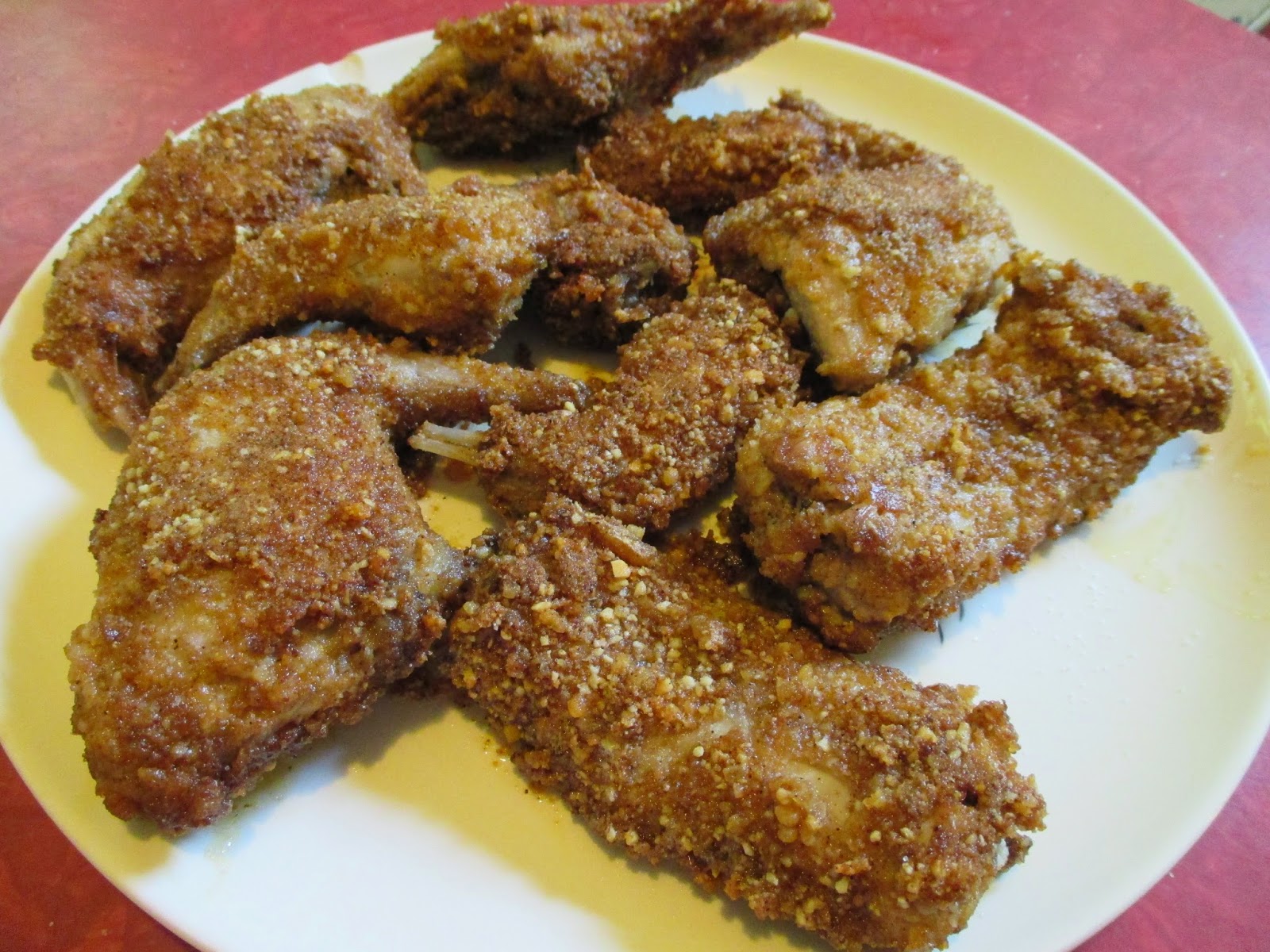I have not eaten much fried chicken in my life, and I was joking that this meal is the closest thing I have ever had to KFC. (I did once eat KFC mashed potatoes at the end of a cross country bike trip - my sister and I had just arrived to the coast in Oregon, and were hungry for mashed potatoes. We got some from KFC and were sorely disappointed!) So My Charming Companion names these "MFS" instead. I don't know that it will become the next big restaurant chain - but these WERE super tasty. If you don't have squirrel handy (perhaps you do not have a road-kill acquiring charming companion like I do) - chicken will also work. Squirrel is tougher than chicken though, so it needs to be poached for a good 30-60 minutes first. If you haven't eaten squirrel, it's a darker meat. I have eaten goose only once, and I thought it was a bit goose like. But really it is just like chicken, but smaller.
 This MFS also utilizes the new frying technique that My Charming Companion has been working on (initially for fish frying). Guess what works great? Parmesan cheese (the kind from a can at Cub foods) and ground up pork rinds. They turn out crisp, crunchy, and delicious. Also - there are actually no weird products in either the parmesan or the pork rinds. Who knew? The pork rinds are fried in their own pork fat (double check that in the ingredients, this may vary by brand) so you aren't getting some weird oils, and salt is the only other ingredient. It isn't a pastured or grass fed animal, but I guess I am not willing to make my own pork rinds just yet.
This MFS also utilizes the new frying technique that My Charming Companion has been working on (initially for fish frying). Guess what works great? Parmesan cheese (the kind from a can at Cub foods) and ground up pork rinds. They turn out crisp, crunchy, and delicious. Also - there are actually no weird products in either the parmesan or the pork rinds. Who knew? The pork rinds are fried in their own pork fat (double check that in the ingredients, this may vary by brand) so you aren't getting some weird oils, and salt is the only other ingredient. It isn't a pastured or grass fed animal, but I guess I am not willing to make my own pork rinds just yet. Minnesota Fried Squirrel (MFS)
1 squirrel per person (or chicken breasts or thighs)
Equal parts Parmesan cheese and ground pork rinds
1 egg, whisked
Bacon or pork belly fat for frying
1. If using squirrel, you'll need to poach it first to make it tender. Put squirrel pieces into pot and cover with water by about an inch. Depending on the size (age), you will need to boil for 30-60 minutes. You can test this by poking the meat with a fork. you want it to feel tender.
 |
| Cooked squirrel pieces |
 3. Heat your pork fat in a cast iron - you'll need the pan to be filled about an inch on the bottom. You want this to be hot when you put in the meat - the fat should be smoking a bit.
3. Heat your pork fat in a cast iron - you'll need the pan to be filled about an inch on the bottom. You want this to be hot when you put in the meat - the fat should be smoking a bit.4. Dip your pre-cooked squirrel or raw chicken pieces in the whisked egg, then coat with the fry mixture (turn it in the mix and make sure all sides are coated). Carefully lay in frying pan so as not to splatter yourself. Cook until crispy and browned on one side (about 4-6 minutes) and flip. If using pre-cooked squirrel, you do the same for side two, and then serve. If using raw chicken (or tender, aka young squirrel) then cover the pan with a lid, turn the heat to medium-low, and cook for 30-40 minutes. Once the chicken is done (you can check with a thermometer), turn the heat up again and flip the meat over to re-crisp the top side.
5. Let meat rest for a couple of minutes to cool down enough to touch, then serve. We had these with some cauliflower mashed potatoes to complete the MFS meal. Yum!
 |
| Here is a fried sardine salad using the fry technique - yum! |













